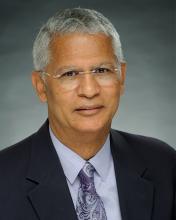California Needs To Relax Its Laws On Nurse Practitioners

Health plan administrators occasionally advance health system change by promoting progressive payment initiatives to reduce plan spending on medical care. I remember when consumers had to see a physician and obtain a prescription to access medication effective at relieving the discomfort of acid reflux symptoms. Against an avalanche of opposition from physician trade groups, health plan leaders won the removal of the prescription medication requirement, thereby reducing health plan spending for the treatment of this rather common medical complaint. This was not the first time that health plans sought to push the envelope, and they are at it again.
Now, urgent care center operators are seeing their insurance claims for payment being challenged or reduced, as health plans are increasingly refusing to pay for physician services, arguing that less costly nurse practitioners can deliver the medical care provided at these facilities. (According to the U.S. Department of Labor, nurse practitioner compensation is about half that of primary care physicians.)
The problem is, California is one of the 28 states in the U.S. that still requires nurse practitioners to practice and prescribe medications with physician oversight. This means that urgent care center operators must absorb the cost of California’s physician supervision mandate. Health plans are right to want to improve the efficiency and lower the cost of healthcare, but they are wrong to disallow payment for a cost that healthcare providers are mandated by law to incur. The better path to take is to first seek changes to the California laws to allow nurse practitioners to practice independent of physician supervision and at their full scope of practice, as supported by their training.
Many of the same physician trade groups that opposed removing physicians from the costly equation used to gain access to antacid medication also oppose any legislative efforts to change the status quo regarding the independence of nurse practitioners. The essence of their opposition is that “physician oversight is necessary to ensure quality of care.” This argument has been investigated and found wanting, as reported in numerous, creditable studies dating back to 2010. The National Academy of Medicine (formerly the Institute of Medicine) sums up the study reports as follows: “No studies suggest that advance practice R.N.s (N.P.s) are less able than physicians to deliver care [within their defined scope of practice] that is safe, effective, and efficient, or that care is better in states with more restrictive scope of practice regulations for advance practice RNs (NPs).” This finding notwithstanding, the California Legislature, embarrassingly, has been unable to muster the votes needed to change the laws that make ours the only western state that clings to these outdated, unnecessary and costly practice restrictions and physician supervision rules.
I believe, though, that change is coming. Increasingly, the supply of physicians needed to provide for our care is proving to be inadequate, and predictions regarding our future physician workforce are dire. We are not producing the number of physicians we need to keep up with the growth and aging of our population. Also, the aging of our population includes our physician population. What that means, ironically, is that the same factor that will increase the demand for medical care also will deplete the physician supply needed to meet that demand, as almost a third of our physicians in California are over 60 years old, many of whom are fed up with and cannot wait to get out of the rat race that practicing medicine is becoming. As it is, we are importing about a quarter of our physician supply from other countries in effort to meet our needs.
To be sure, we are going to be hard-pressed to meet our future physician supply needs. However, if it is true that “necessity is the mother of invention,” then nurse practitioners are well-positioned to help meet the primary medical care needs of our expanding and aging population in a redesigned service delivery model. Twenty-two other states get this. As a result, for the 10-year period ending in 2022, the prediction is that nurse practitioner jobs in the U.S. will have grown by 31%. It is time for California to join these states by authorizing the full engagement of the only tried and proven resource available to abate the impact of the state’s looming physician supply shortage.
Jim Lott is former executive vice president of the Hospital Association of Southern California and a healthcare scholar. He is a regular contributor to the Payers & Providers editorial page. He may be reached at lott@sbcglobal.net.






